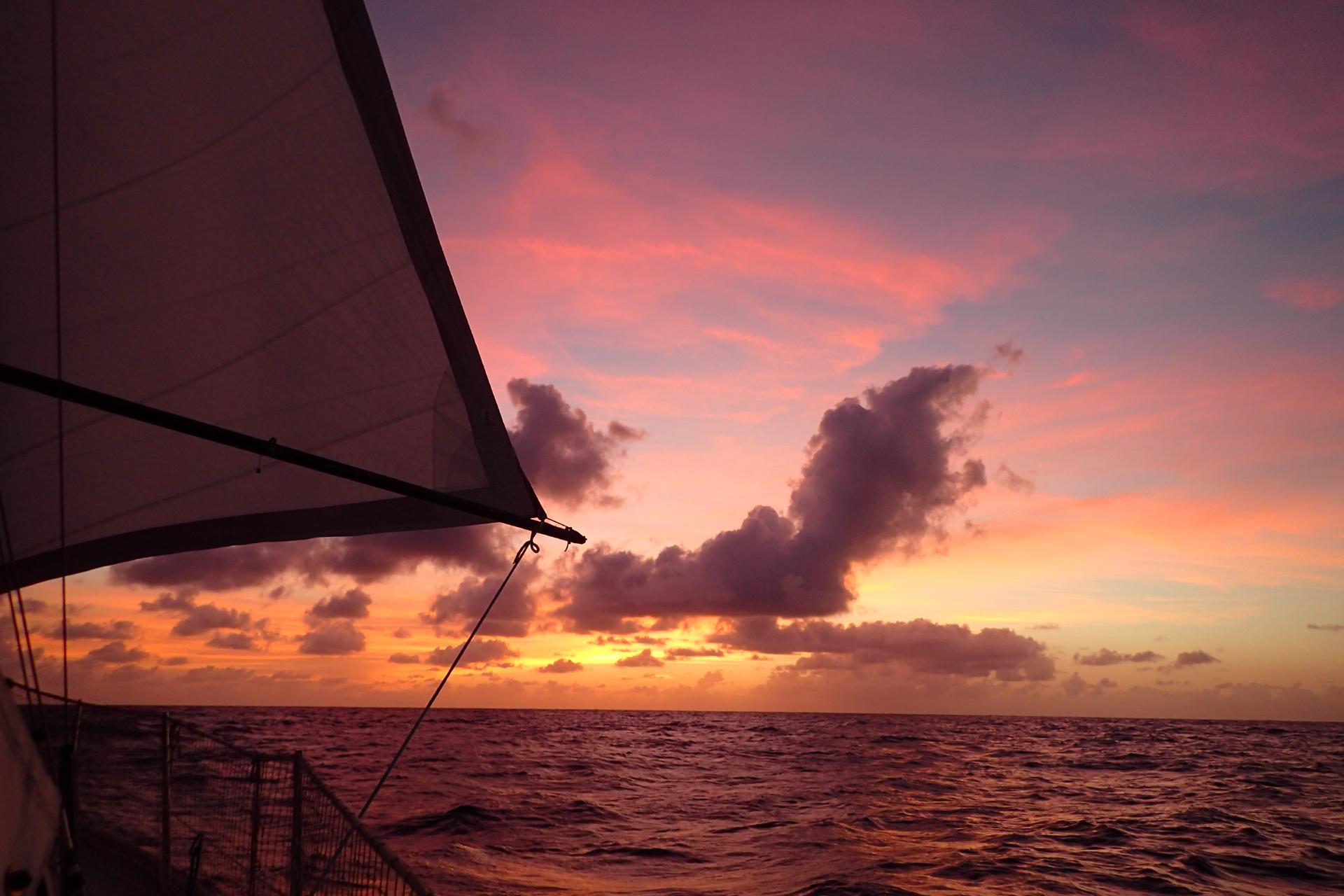We start late in the evening because there were problems with the water supply in the marina and we didn’t want to start with empty tanks (although we also have a watermaker on board). So we leave the harbour already after dusk. But now that we know the way, navigation is no longer a special hassle.
Between the islands (Sao Vicente and Santo Antao) is a strong Wird, which is caused by the jet effect. In general we had the impression that there is usually a lot of wind in Mindelo on Sao Vicente – which can be very pleasant with the already relatively high temperatures. We have made good progress in the beginningat (thanks to the jet effect!). However, there is very little wind behind the cover of the island Santo Antao and we use the engine for a while to get a bit out of the area of influence of the island. We feel the influence of the island (after all a 2000m high rock in the middle of the Atlantic Ocean) practically all day long, which is especially noticeable by changing wind directions. Only then we reach an area with a stable trade wind. However, this trade wind, contrary to what one might expect, is not an downwind, but almost “half wind” for us (i.e. wind rather from the side). Of course we can sail well with it and make relatively fast progress.
However, this also means that we can only change to our “trade sail” with 2 Genoas after half the distance, thus on day 8. With this sails we sail with our
Maya then again a bit faster and sail calmer.
We are a little surprised that we meet relatively many ships far away from the land. (Hello also to Dadimar, Key Night, Le Champlain and all other Atlantic encounters!) In the first week we meet practically every 2nd day a ship or even several – although we can see them partly only over AIS and do not always have direct visual contact. On the one hand it’s a good feeling that you’re not all alone out there, on the other hand the ship traffic naturally requires increased attention from us. Only in the middle of the Atlantic we really don’t see anyone for a little more than 4 days.
Life on board has its own rhythm that you have to find your way into first. In the beginning we needed a few days (some more, some less) to get used to the movements of the boat. You always try to fill the free time with something (reading, cooking, cleaning up and also “watching the speed to calculate the arrival”) to make the passage as entertaining as possible. The first few days Yana only dreamed of arriving as fast as possible. Only later we started to enjoy sailing. We spent much more time outside and just observed nature. We only saw dolphins at the beginning of the passage, later we saw flying fish and almost every day also birds (which surprised us a bit – so far from any land).
Trivial things, which are done on the land without special effort, require special attention on board, because the boat moves constantly and not only forward, but also from left to right and from right to left. Really ALWAYS! – even if sometimes more and sometimes less. Several times we have experienced that the food flies out of the plate or a coffee has to be cooked again right after cooking, because it has run out. In daily life on board you learn to be more patient. But at least we apparently had a good weather window, because we didn’t experience any squalls, heavy weather and only little weak wind and rain during the crossing. We used the engine very little – at the beginning and at the end of the passage. In between we were rewarded with a wonderful time under sail. But we had to “search” for the stable trade wind relatively far to the south (which also allowed us to make the stop on Cape Verde, which was not originally planned). We have heard of people who sailed the “direct way” from the Canary Islands at this time of year (a bit ahead of us) and “hung” in a large area of calm.
Great, we made it! We are very happy that we managed the first ocean crossing with the Maya and that everything went so well. Despite the rather light conditions we are a bit proud and ready to make the preparations for our further journey.
Altogether we spent about 15 1/2 days at sea and covered more than 2000 nautical miles.





































